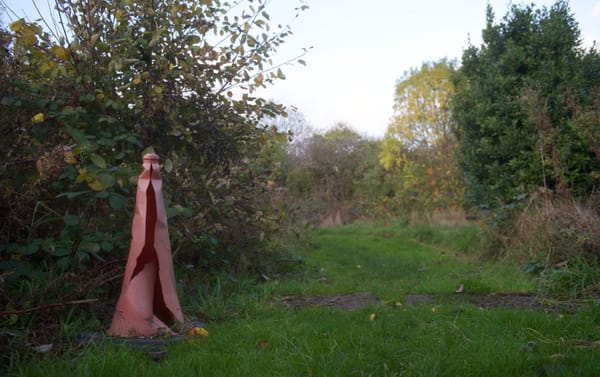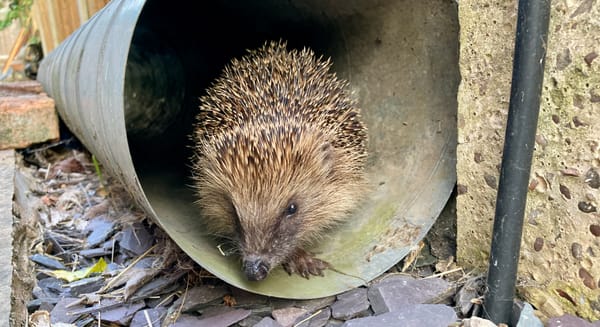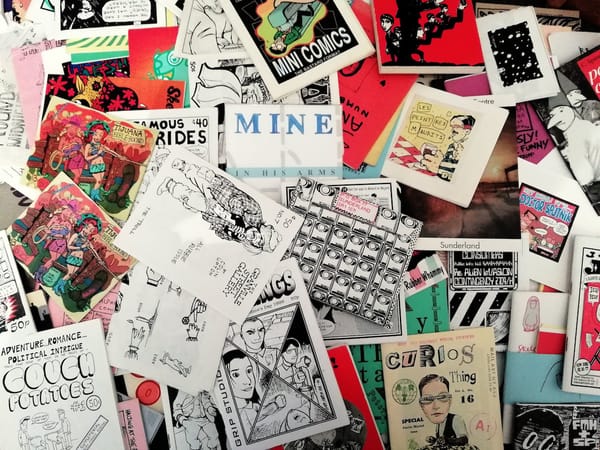The Aerobic Digest 10: Biochar and red wrigglers
My compost brings all the worms to the heap, plus a deep-dive into making and using charcoal in your soil.
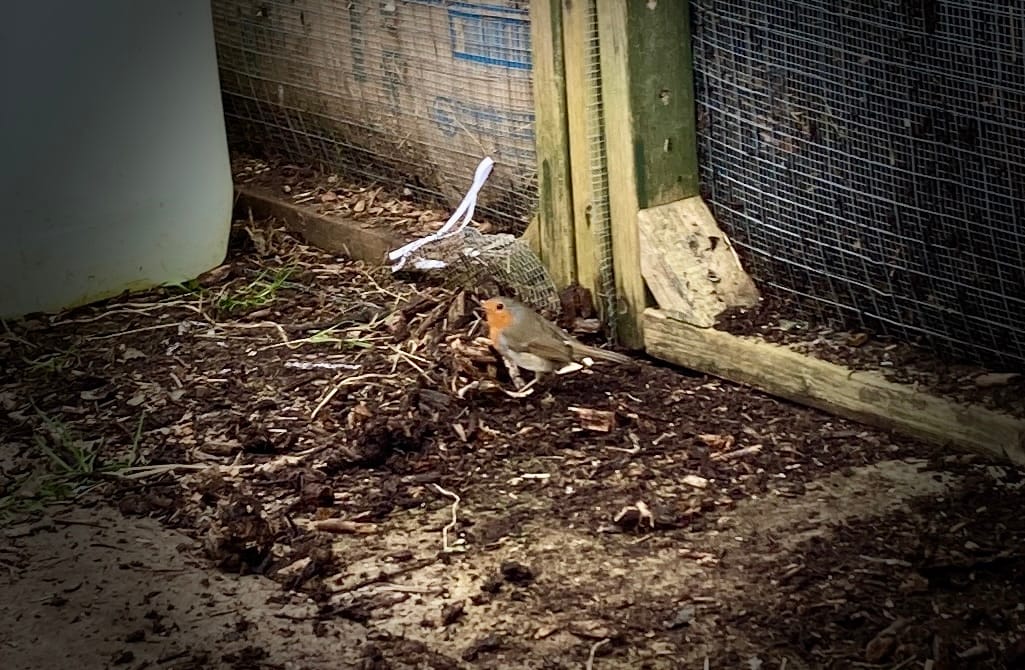
I don’t know if red wigglers is the official name for them but that’s what Sean at Edible Acres calls them in his videos. They’re the thin red worms that multiply like crazy in your compost under certain conditions. Are they baby earthworms? A whole different species? I don’t know! One day I’ll look them up.
For some reason I haven’t seen consistent worm action throughout my heaps since I scaled up from a plastic Dalek, but today I hit the jackpot. Thousands of the little red dudes!
This is the “stinky heap” in the hexagonal bay that I turned in on itself in January. It had gone anaerobic because I’d gotten the balance very wrong when I filled it in October – far too much food waste and fresh greens and not enough dry browns. During the turn I’d added copious amounts of shredded paper and it really made a difference. From a foul-smelling gloopy mess to a sweet-smelling worm party in under two months.
This is now cooked and needs to rest at a cooler temperature while the worms and other critters process it further, so I turned it into the middle resting bay to free up the hexagon for the next batch. As I did so I was visited by not one but two robins. Sadly the second one flew off as I lifted my phone for a photo.
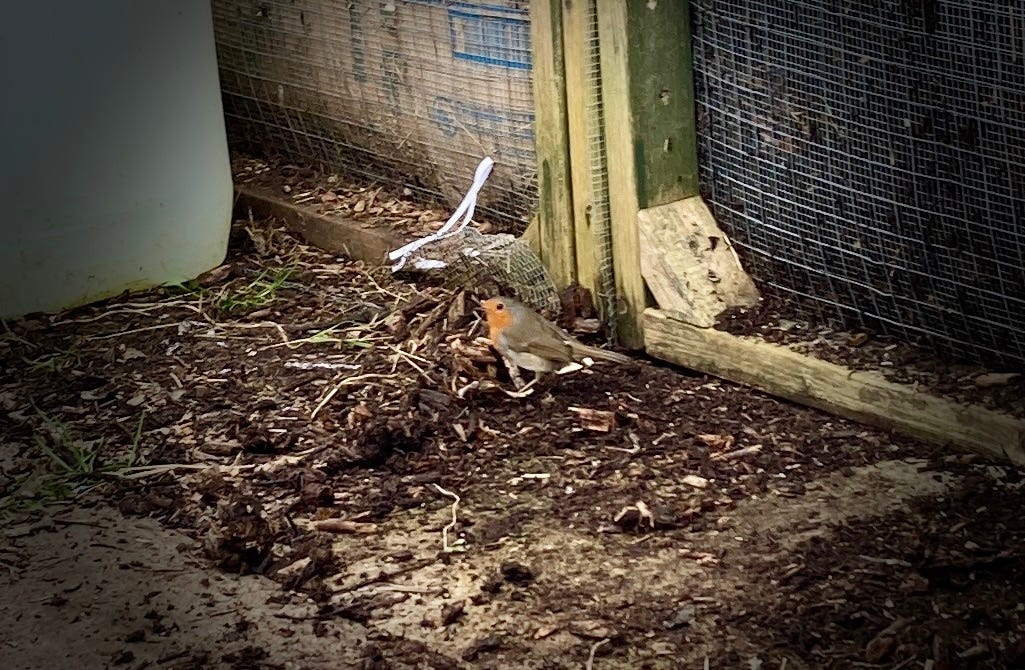
Earlier in the week our new allotment helper Val was back and we emptied the middle resting pile into the “done” bay. This contained two very distinct batches - the bottom half was a normal-ish mix of veg, hay and cardboard from the hexagon which I’d turned in there in October - nice compost but not very crumbly. The top was from the square bay which had taken 20+ sacks of leaves and chipped branches from my brother in law’s hedge. While I did layer it with food scraps and shredded paper it was still pretty wood-heavy, which really stopped it clumping.
I think they’re both perfectly good batches of compost but they sit at either end of the acceptable scale. Now they’re mixed up in the ‘done’ bay they’re hopefully nice and goldilocks.
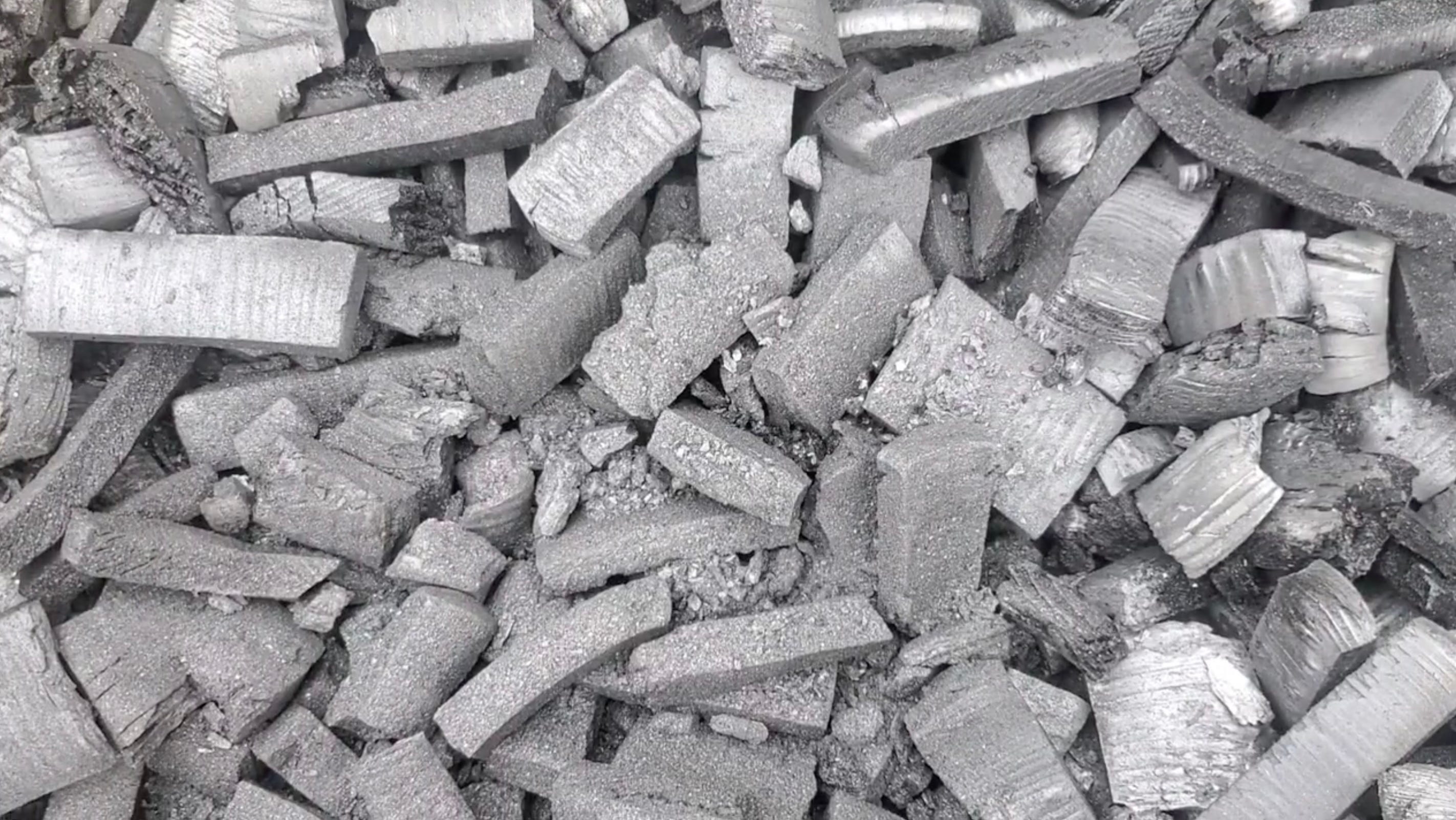
A short introduction to biochar
One of my medium-term goals is to figure out how to make biochar – charcoal for use as a soil amendment – in a suburban setting. To turn wood into charcoal you need heat. This is usually achieved by either half-burning the wood and stopping before it becomes ash, or placing the wood in an airtight container and surrounding it with a fire. (The resources I’ll post below will explain this in more detail.)
The problem is you need fire, and allotments in Birmingham do not allow bonfires except in November and only for organic waste generated on site, mostly because people live close by and would like to leave their washing out, which is fair. Of course it’s possible to create a high enough temperature to pyrolyse wood in an electric or gas oven – at my bakery we once found a baguette that had gone through the whole bake shift lost at the back of the oven and had totally carbonised – but loading a food oven up with random bits of wood is a total no-no. It would need to be a dedicated tool, not to mention the financial and ecological running costs.
My friend Gerry is looking to make charcoal pencils from thin branches of coppiced willow and will probably do this by putting them in a biscuit tin in a small bonfire. Unfortunately I would want to produce a big enough pile, like a few hundred litres, to make a difference to my compost over a year. So until I can find a nearby location where I can make a lot of smoke, the biochar idea is on the back burner (sorry-not-sorry).
So what exactly is biochar, why do we need it and how do we make it?
Probably the best explainer I’ve seen is what first put it on my radar - Bruce Darrell’s video from his RED Gardens project. In eight minutes he introduces the concept, the history and the various methods, before showing how he makes it using a simple pit dug in the ground.
The big lesson, and one which I keep forgetting, is that biochar is charcoal PLUS biological matter. Charcoal is incredibly porous, like a sponge, and acts as storage and slow release of nutrients, as well as a home for microbes. But if you add it “raw” to the soil it will just soak up any goodness that is already there.
If you prefer your information in textual form, the last thing I read, and what prompted me to write about it this issue, is the biochar explainer on the MIT climate portal. While Bruce is looking at it as a practical amendment, this is seeing it more in terms of carbon sequestration, which it is good for too.
For more of a deep dive, I’d recommend Porterhouse and Teal’s playlist of videos which I learned a lot from. His introduction is on a par with Bruce Darrell’s but instead of using a pit he uses a retort, a sealed barrel of biomatter within a large barrel of fire - essentially an oven. Also, look out for the video of making charcoal from animal bones - useful if your food waste stream comes from carnivorous households!
An attempt at explaining the science
Before I got into this I had no real idea what charcoal was. I just assumed it was like normal coal, only crumblier. The science of pyrolysis turns out to be very simple and kinda fascinating.
We all know that burning organic matter produces carbon dioxide, because organic matter contains a lot of carbon and fire needs oxygen. Put the two together and you get CO2. But of course there’s more to organic matter than carbon, summarised as CHNOPS, or carbon, hydrogen, nitrogen, oxygen, phosphorus and sulfur. Crudely speaking (and I’m sure an actual scientist will correct me) the smoke you get from a fire comes from the non-carbon elements, which is why charcoal is sold as a ‘smokeless’ fuel, and wood-burning stoves should only use dry wood.
During pyrolysis, we heat up the wood to the sort of temperature where it would normally catch fire, but restrict the amount of oxygen available to it. If there’s no oxygen then the carbon cannot turn into CO2, but other elements which do not need oxygen will be forced out by the high temperature. The end result is pure carbon.
Of course these non-carbon elements have a value to the garden. One reason we compost is to capture and process them into plant food. But it’s not easy to get them out of lumps of wood, and the benefits of having that massive surface area (2,000 sq metres within one gramme!) are huge.
Next steps
I’ve been collecting wood that’s not suitable for composting for a couple of years and the first thing I need to do is decide whether I want bury it in a hugelkultur mound or make it into biochar. Both have their appeals, which is annoying.
If I do go the charcoal route, I need to dry my wood stock over the summer, which means constructing a simple weatherproof store, so that’s a job for the spring.
Then I need to remember to make it in November when fires are permitted on the allotment. I’ll probably go with the cone pit rather than invest in a retort at this stage and since it takes a few hours maybe make a social event out of it. (I used to have lots of bonfires when I was younger and miss them.)
If you have any experience in making biochar and have tips, please let me know. And if you’re in Birmingham (UK) and would like to collaborate on something like this, hit me up!
Thanks for reading!
Please continue to send compost-related things to info@aerobicdigest.email or @ me on Mastodon where I keep tabs on the #compost tag.
Your friend in rotting vegetable matter,
Pete Ashton
